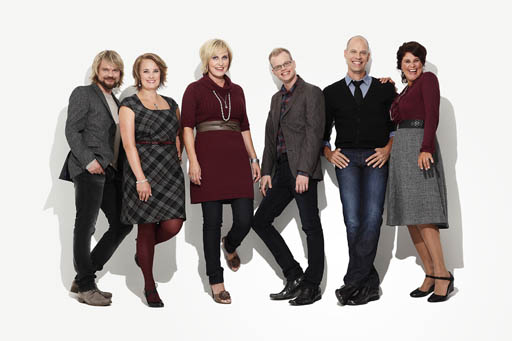Rajaton
Thursday 24th January, 9:00pm
Kings Place / Hall One

Rajaton, triple platinum Finnish recording sensation, has won the hearts and acclaim of audiences and critics making them a phenomenon on the world stage.
Say hello to Rajaton!
Discover 'Dobbin's Flowery Vale'
This is an Irish folk tune consisting of two parts: an air and a slow reel.
The arrangement by Matti Kallio is based on a version by Altan. The piece has been made into "vocalese" to leave space for the imagination - for listeners and singers alike.
First of all we have to confess that there are 6 different ideas about what this song is about! But here's one window for you:
The beginning of the song is more like image of air, maybe haze in the dim light of morning. The use of the voice is breathy and serene. The rhythmic idea of the song exists already in the beginning even though the melody flows freely.
Listen to the breathy free-flowing vocal lead (00:10)
When the lower voices join with harmonies, the imagery of the view gets clearer. For the lead there is a more focused way of using the voice to bring in emotions - maybe that's the start of a story?
Hear how the lead changes when the lower harmonies join in (00:28)
When the rhythmic part starts, the bass provides a root down to earth, no matter how high the tenor chooses to fly with his melodic lead. The accompanying parts are holding both harmony and rhythm, creating the glue for the air and the earth to stay connected:
Listen for the bass providing continuous musical grounding (02:04)
Hear how instead of using basic "du-du"-sounds, singers use "thu-thu"-sounds. This allows the voice to ring from the beginning of each note. They still have a clear attack at the beginning of the notes but it's less "strict" and easier to bend to fit the groove. And also just because we like the SOUND!
Using 'thu' sounds instead of 'du' (02:27)
When the dramatic line needs more tension, we all sing with fuller sounds, aiming for emotional pressure rather than vocal stress. Sometimes towards the end of the song the emotion gets thick enough that the last chord can be more of a "shouting sound" than well-supported ringing sound, but we have accepted that.
Freely exploring the full power of the human voice (04:04)
We're creating sounds that are free from that "educated way of using and holding voice" - as long as it's well connected and supported with our bodies, that's enough.
Written by Essi Grönberg
